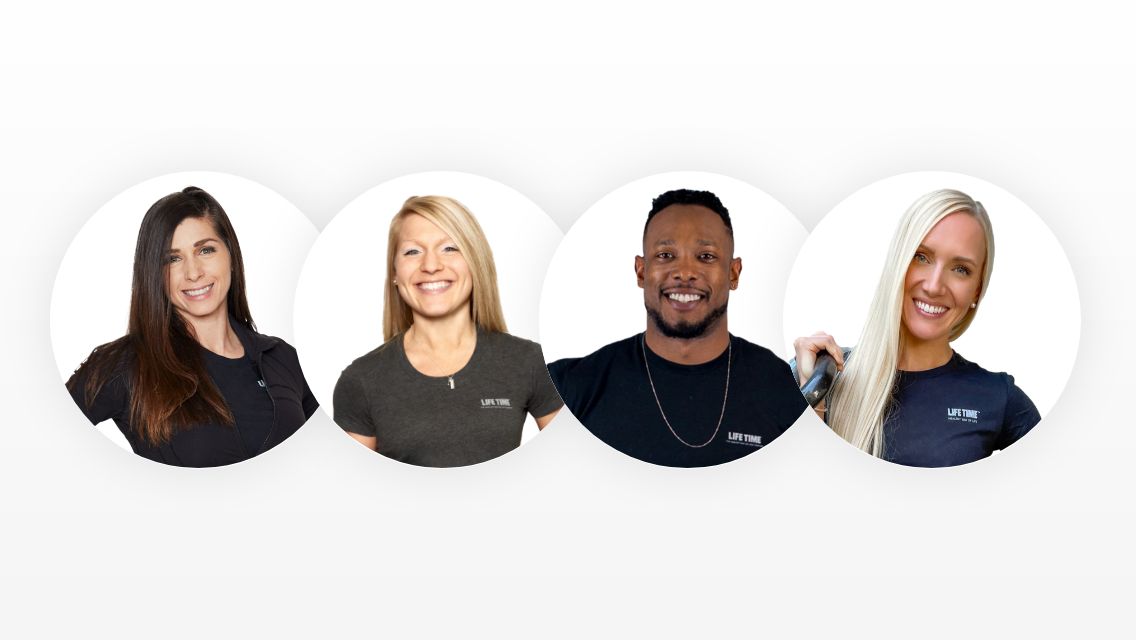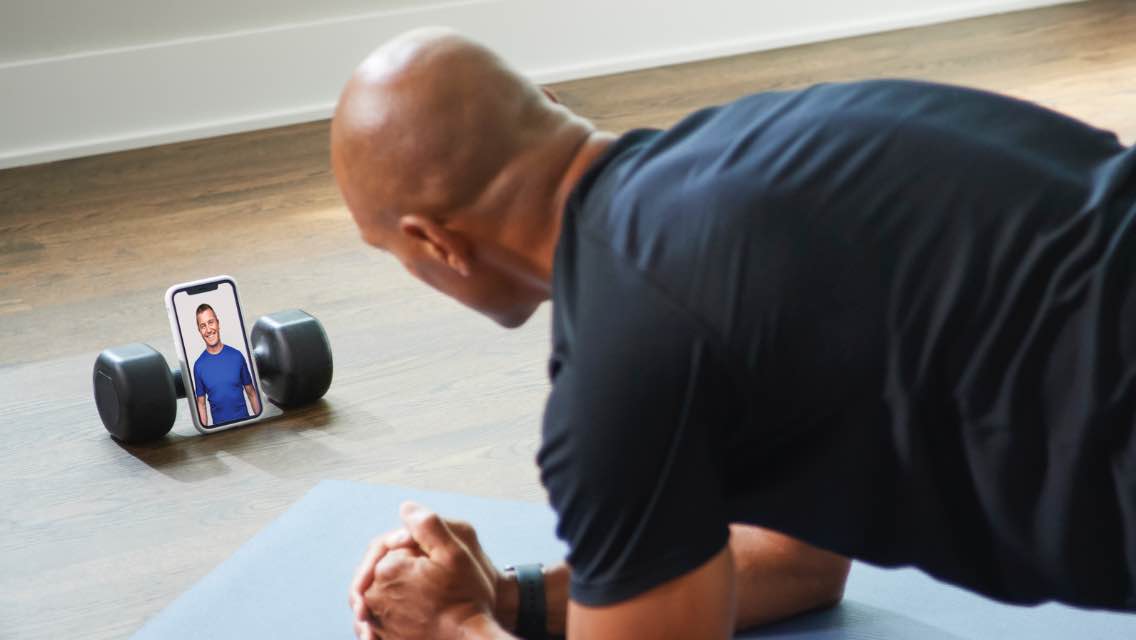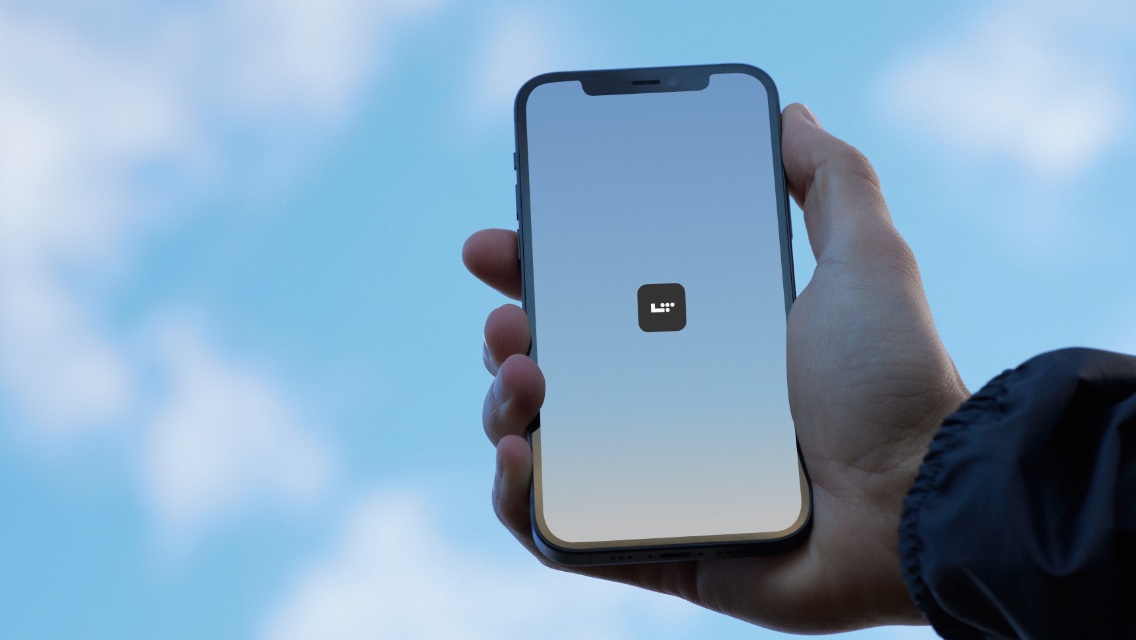At-home workout programming may not be new, but it certainly reached never-before-seen levels of innovation, availability, and use during the pandemic. And while most of us are happily returning to many aspects of our pre-COVID lifestyles, there is still very much a place for the convenience and benefits digital offerings can provide.
“We’ve always prided ourselves on having the best people, places, and programs,” says Cliff Edberg, Master Trainer and director of strategic growth initiatives at Life Time. “Over the past year, when the ability to come to our places was more restricted, we created a new place — a digital app — where our members could still connect with our people and programs.”
He continues: “Even though we are excitedly welcoming members back into our clubs — and that still holds a valuable place in routines — we also know that our digital offerings provide a great additional option for members to have to support them on their health journeys.”
One thing we also learned during the pandemic is that maintaining and building fitness on your own can be challenging. Whether it’s the motivation to start, accountability to keep going, or knowing the exercises that are best for your body and goals, help from an expert can make all the difference in staying consistent and generating change.
For those looking for a do-anywhere option that also offers personalized guidance, virtual training is a great option. We asked Edberg and David Freeman, the national digital performer brand leader for Life Time, to give us the lowdown on Life Time’s virtual training options.
First things first: What are the different options available for virtual training at Life Time?
Edberg | Virtual training is the ability to work with a coach — either through programming or live video calls — who guides your exercise efforts toward your goal or desired result. We offer three different options for people to choose from, based on factors such as budget, whether they prefer a one-on-one or community environment, and if they prefer to exercise live with their coach. Members access all of these options via the Life Time Digital app.
The first option is Team Training Programs, which is the lowest cost. With this, you join a virtual community of people working toward a similar goal. It’s led by the same coach throughout the program, and you’ll get a mix of workouts, a structured calendar plan, and the ability to message with your coach and other team members.
The second option is Custom Training Programs. This is a customized program your coach creates for you, with the additional features of habit and result tracking.
Lastly, there’s Video Training. This is a similar customized offering, but is distinct from Custom Training Programs in that you can do live video sessions with your coach.
With all of these options, you have access to your coach who provides feedback, encouragement, and answers to any questions. They all include instructional exercise videos, ongoing programming for continued improvements, educational resources, and the connection to a group for an added layer of support and motivation, too.
With so many at-home options out there, what makes Virtual Training at Life Time different?
Edberg | We are the only training system that offers the option for a combination of in-person and virtual efforts. And in person doesn’t necessarily have to mean meeting your trainer face-to-face, but rather that you have access to our health club and all the equipment, classes, amenities, facilities, and more inside of it. If you want to connect with your geographically distant coach while you’re at the club, of course you can do that, too.
Then, there are all the digital offerings you have access to outside of virtual training, including on-demand and live-streaming studio, cycle, and yoga classes, Apple Fitness+, weight-loss programs, curated content, and podcast episodes.
No matter who you are or what goal you’re going after, we can customize a plan to meet your needs. Want to follow a program just for the summer? Looking to get ready for your wedding? Working to build up your fitness after a year of being more sedentary? We can help you.
Freeman | With our network of experts, there’s also no limit to who you can get connected to. For example, I can scratch the surface on nutrition guidance, but it’s not my strongest suit. If that’s an area you could use support in, we can partner with a Life Time nutrition coach to ensure you’re set up for success. We can build a coordinated team of experts depending on your needs.
If I’m trying to decide between virtual and in-person training, can you offer any advice?
Freeman | There are just three groups of people I would not typically recommend virtual training to: those doing rehabilitation, high-performance athletes, and those seeking a drastic transformation.
If you’re rehabbing an injury, you want a coach who can be hands-on and help you through your recovery. For high-performance clients, there are certain mechanical aspects that are also more helpful for a coach to see in person.
And those who are seeking significant transformations typically need to start on an emotional level first, which is why it can be helpful to connect in real life — and gain that in-person trust and accountability.
Outside of those demographics, virtual training can be a good option for most everybody.
Edberg | Your level of personal accountability and lifestyle will dictate what I advise you to do. If I ask you what’s been keeping you from reaching your goal and you say the snooze button, I’m going to recommend you show up in person. If it’s that you travel every other week or you struggle to find time to get to the gym, you’d do well as a virtual client.
The best place to start is a consultation with a trainer. You can share your goals and talk about your individual needs, obstacles, and preferences. Based on your conversation, a trainer can recommend what will work most optimally for you.
Let’s talk about the pros and the cons: What are the advantages of an entirely virtual approach — and are there any limitations to consider?
Edberg | Because it’s remarkably more convenient, I would say virtual has helped people see easier success with health changes. If you’re depending on getting to the club and your kid becomes sick, your day gets busy, an appointment pops up, the weather is bad, whatever it may be, you might miss your workout. If you have a program in your phone, you can do your session at 6 a.m. or midnight — or whenever works for you to fit it in. It removes those obstacles.
There’s also greater accountability, as your coach can see everything you do in the app. They know if you complete your workout, and they can see how you’re doing with any food choices or lifestyle habits you might be tracking.
We’re finding that people love the community aspect of the Team Training Programs, too. You might get something similar in a studio class, but you’re not always going to run into the same people every time. This is the same group every day for months — you can see them hit PRs, chat about your daily workout, and reach out to help if someone’s struggling.
We’ve also gotten feedback that members feel the live video option is more intimate, as it’s just you and your coach for one hour, as opposed to being on a fitness floor with other distractions and a hundred other people.
However, if you are virtual, it’s important to note that you will need to add resistance training to your plan at some point versus solely using your body weight in order to continue to see progress. This is why having both the in-club and at-home option is so great, as you have access to every piece of equipment you could possibly need without building out an expensive home gym.
Freeman | As trainers, we’ve always had to ability to connect with our client beyond the walls of the club via text or whatever it might be. Now, with the virtual programming element, the connection is so much greater. Personally, I have the opportunity to cast a wider net and create change in so many more people’s lives.
I do like having the best of both worlds, though. Being around other people can create a game-changing atmosphere, especially when it comes to motivation. If you’re at home alone, you only see what you see and feel what you feel. If you’re at the club, others might spark your curiosity to try something new or push a little further.
If you’re more introverted and feel comfortable at home, that’s fine, too — it’s all about thriving off what makes you tick.
Who are the coaches? Do I still pick someone who works out of my local club?
Edberg | Virtual Training offers up whole new opportunities to work with anyone, regardless of location. We have coaches with a variety of certifications, qualifications, and specialties. To date, there are about 2,500 Life Time Trainers across the United States and Canada that you can connect with.
When it comes to any type of personal training, it’s all about chemistry. Pursing any health and fitness goal is a journey, and you need the right partner to coach, motivate, and inspire you along the way. The beauty of working with a coach virtually is that you no longer need to also find someone within a close proximity to yourself — you can find the right person no matter where you or they live.
Freeman | The three big-picture areas we see members looking for help in at Life Time are health, performance, and aesthetics. So, I have our coaches choose how they rank each of those three as it relates to their drive factor, so we know who can best cater to each piece for clients. Outside of that, of course, we all have our own specialties as coaches we can support our clients in as well.
How do you access virtual training?
Edberg | All aspects of virtual training are delivered in the Life Time Training app via the Life Time Digital app. Life Time Training is a dedicated platform that comes with a library of exercise demonstration videos, the capability for coaches to create structured calendars, and the messaging system for you and your coach and community.
All of the other digital offerings I called out earlier, as well as things likes class schedules and club hours, are in the Life Time Digital app. The two apps are set up to move back and forth between.




